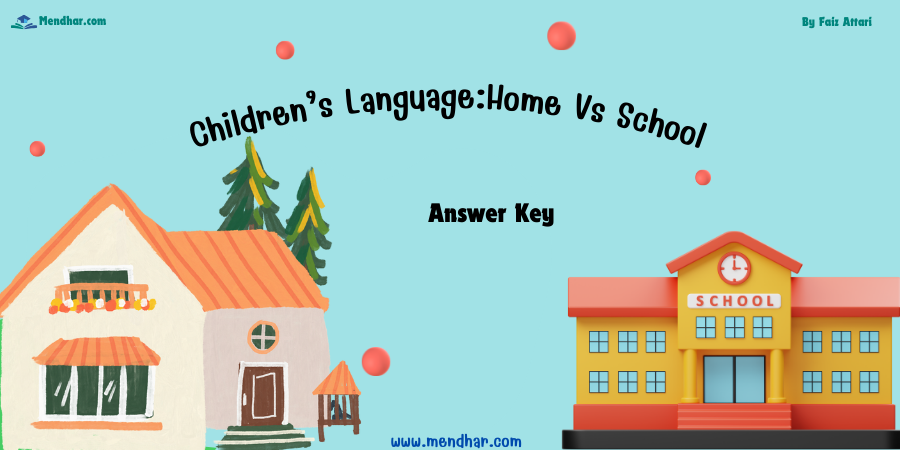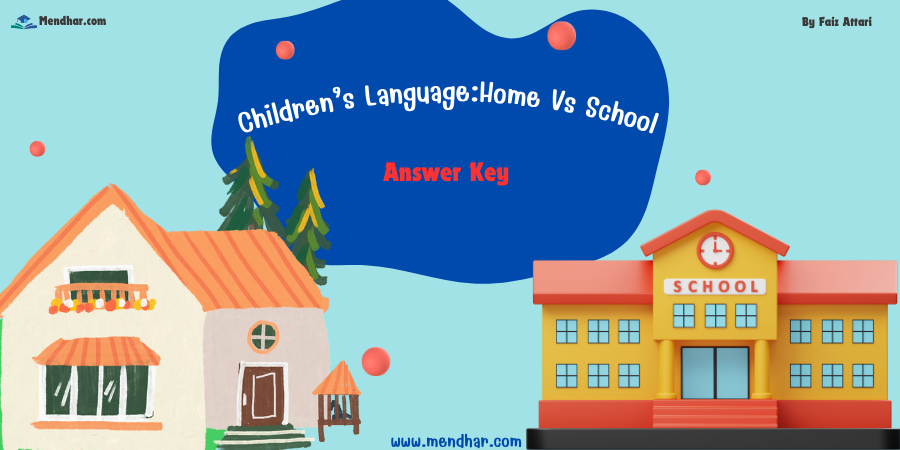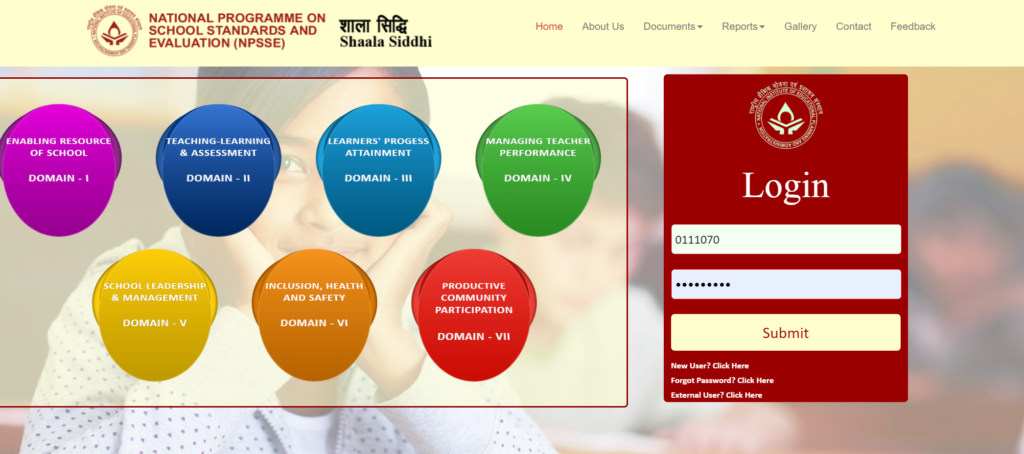Answer Key for "Children’s Language: Home Vs School" Module

Children’s language development is a fascinating journey that begins at home and is further shaped in school. The home environment is the first and most crucial space where children acquire language. It is in this setting that they learn to express their thoughts, emotions, and needs through words and gestures. The language children are exposed to at home is often informal, filled with familiar phrases, dialects, and colloquialisms that reflect their cultural and familial backgrounds. This natural, intuitive learning process is driven by interactions with parents, siblings, and extended family members, who serve as the primary language models.
However, when children enter school, they encounter a different linguistic environment. In school, language becomes more structured and formal. Children’s language: home vs school becomes a critical comparison as they adapt to new vocabulary, grammar rules, and communication styles that are essential for academic success. The language of school is often standardized, focusing on correct grammar, sentence structure, and vocabulary expansion. It is here that children learn to communicate in ways that are not only understood by their peers but also align with educational expectations.
The transition between home and school language can sometimes be challenging for children. For instance, a child who speaks a regional dialect or a language other than the medium of instruction at home may face difficulties adjusting to the formal language used in school. This shift can affect their confidence and participation in class, making it essential for educators to be aware of these differences.
Answer Key for "Children’s Language: Home Vs School" Module
Q.1 Minati of class = feels embarrassed to use her language in class. She also finds it difficult to communicate in the school language. For this reason, she mostly remains silent in class and does not even like to respond to the questions asked by the teacher. According to you, what could be the reason behind this behavior of Minati? You can choose more than one option.
- She is repeatedly interrupted or scolded for speaking in her own language
- Her command in her home language is weak
- The teacher encourages her to speak in her home language only
- There are no opportunities in the classroom to use one’s mother tongue
Correct Answers:
- ✅ She is repeatedly interrupted or scolded for speaking in her own language.
- ✅ There are no opportunities in the classroom to use one’s mother tongue.
Q.2 Aftab is a four-year-old boy who is exposed to a language in school that is very different from his home language. As a result, he is unable to understand what is being said to him. Where do you think the chances of hearing this second and different language are greatest in the given contexts?
- At home
- In the neighbourhood
- In the market
- First time in school
Correct Answer:
- ✅ First time in school.
Q.3 Malti Ji has come to meet her son’s teacher, who is in class 3. Let’s read their conversation. Teacher: Ashu is a weak student in my class. Neither does he respond to any questions, nor can he write Hindi correctly. I think he is not interested in learning languages. Malti Ji: I’m worried, how can this be possible? Do you know that Ashu speaks three languages at home, which he learned from us and his grandparents? He also tells stories with a lot of fun. He also enjoys making letters on walls and on blank papers. Based on the conversation between Malti Ji and the teacher, which of the following is/are possible?
- The emphasis is entirely on the use of Hindi language in the classroom
- Ashu is not interested in learning languages
- Ashu doesn’t know Hindi properly yet, that’s why he remains silent
- Ashu does not like Hindi language
Correct Answer:
- ✅ Ashu doesn’t know Hindi properly yet, that’s why he remains silent.

Answer Key for "Children’s Language: Home Vs School" Module
Q.4 Chandan goes to a primary school in Delhi. Even though he studies Hindi in class, he speaks Bengali at home. His teacher feels that he makes many mistakes while writing like: “Maine kaul ghor jate hi pehle roti khaya.” According to you, why Chandan would be making such mistakes?
- Chandan pays no attention to his use of language while writing
- He is not understanding that only pure Hindi should be used in the classroom
- While writing, Chandan is mixing both the Hindi and Bengali languages
Correct Answer:
- ✅ While writing, Chandan is mixing both the Hindi and Bengali languages.
Q.5 Farida says that if children are given the freedom to use their language in the classroom, they will not be able to learn language skills, while Mehar Ji disagrees with her. According to you, what could be the reasons for Mehar Ji’s disagreement? You can choose more than one option.
- Allowing children to use their language in the classroom creates a fearless environment, which in turn helps the children learn.
- When children express themselves in their own language, they improve their speaking skills.
- Children can better connect with the school language if they are allowed to speak and narrate stories/poems in their own language.
- If children learn to speak, write, read, and listen in their language, they do not need to learn the school language.
Correct Answers:
- ✅ Allowing children to use their language in the classroom creates a fearless environment, which in turn helps the children learn.
- ✅ When children express themselves in their own language, they improve their speaking skills.
- ✅ Children can better connect with the school language if they are allowed to speak and narrate stories/poems in their own language.
Q.6 Would it be correct to say that knowing or learning more than one language can be a burden for a child? You can choose more than one option.
- Yes, because the focus will be only on learning the language and not on learning other skills
- No, because it will help them to interact with different people and make them more flexible.
- After all, maybe sometimes they need to use mixed language.
Correct Answers:
- ✅ No, because it will help them to interact with different people and make them more flexible.
- ✅ After all, maybe sometimes they need to use mixed language.
Answer Key for "Children’s Language: Home Vs School" Module
Q.7 Vivek Ji’s son studies in 1st class. Vivek Ji requests his son’s teacher to use only standard language in the class and makes it mandatory for all the children. What do you think could happen by doing this? Select the most appropriate option.
Children will be able to understand the teacher’s conversation well
Children will feel excited to express themselves in class
Children will have difficulty understanding the teacher’s instructions.
A good learning environment will be created in the classroom
Correct Answer:
✅ Children will have difficulty understanding the teacher’s instructions.
Q.8 Which of the following activities can help children in primary classes to bridge the gap between their own language and the school language? You can choose more than one option.
- Labelling things in the surroundings in children’s language and school language
- Writing children’s folk songs in school language
- Reading and repeating each lesson 2-3 times with the child
- Creating a storybook in children’s language and school language
- Asking children to repeat each line after you
Correct Answers:
✅ Labelling things in the surroundings in children’s language and school language.
✅ Writing children’s folk songs in school language.
✅ Creating a storybook in children’s language and school language.
Q.9 What strategies should teachers use to promote linguistic diversity and inclusion in a multicultural classroom environment? You can choose more than one option.
- The teacher should know all the languages used by the children at home
- Teachers should try to learn children’s language
- Encouraging children to share thoughts, feelings, etc., in their own language in the classroom
- Doing some activities in which children bring their language into the classroom along with the school language
- Interrupting children for using their home language in class so that gradually they talk only in the school language
Correct Answers:
✅ Teachers should try to learn children’s language.
✅ Encouraging children to share thoughts, feelings, etc., in their own language in the classroom.
✅ Doing some activities in which children bring their language into the classroom along with the school language.
Q.10 Sushila Ji uses a ‘show and tell’ activity in her 1st class to allow children to bring items to class and talk about them. On this day, children often display new items by placing them on the table, like in a fair. In your opinion, are there any benefits to this kind of opportunity for learning the language at school? Select the most appropriate option.
- Yes, because children will be able to explain things without hesitation and with confidence in their own language
- No, there is no need to talk about the vegetables or fruits brought by the children
- The activity is beneficial, but it should only be done in the school language
- The activity will be more beneficial if there is the opportunity to use both home and school languages so that it will bridge the gap between the two languages.
Correct Answer:
✅ The activity will be more beneficial if there is the opportunity to use both home and school languages so that it will bridge the gap between the two languages.
This answer key supports the understanding of children’s language development, emphasizing the importance of bridging the gap between home and school language for effective learning.


